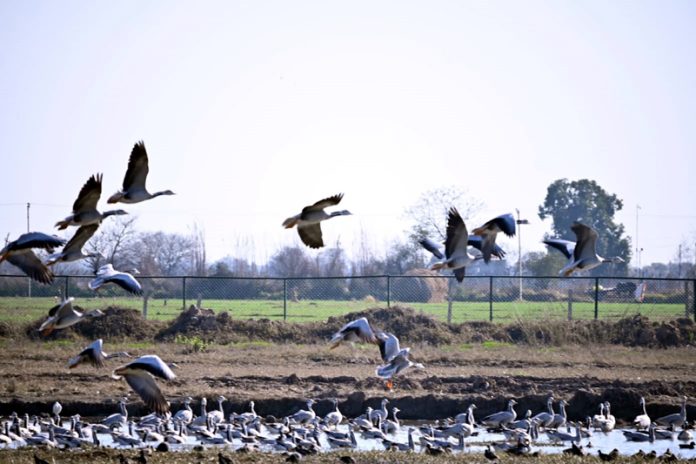Jammu’s Gharana Conservation Reserve is on the brink of a remarkable milestone. The expansion of its water body by nearly 80 kanals in the last three years has sparked a renaissance for this world-famous wetland. Once marred by neglect and environmental degradation, Gharana is now set to welcome a record-breaking number of migratory birds this season. This achievement underscores the power of focused conservation efforts and offers a blueprint for restoring ecological treasures across the country. Just a few years ago, the Gharana Wetland faced significant challenges. Unchecked sewage flow, encroachments, and the absence of serious conservation measures had reduced its area and ecological vibrancy. The intervention of the High Court in response to a PIL catalysed a turnaround. The Wildlife Department acquired 400 kanals of land, restored the wetland’s original boundaries, and implemented comprehensive habitat improvement strategies. Key measures, including large-scale de-silting and de-weeding, have enabled the water body to grow from a mere 30 kanals in 2021 to 110 kanals today. Beyond this, efforts to prevent untreated chemicals from nearby paddy fields from entering the wetland have fostered a thriving ecosystem. These steps have not only revived the wetland but have also significantly enhanced its appeal to migratory birds.
The Gharana Wetland’s transformation has been met with an unprecedented response from migratory birds. Over 8,500 birds visited during the 2023-24 season, and by early January this year, the number had already exceeded 5,000. With projections suggesting the arrival of over 10,000 birds by March, the wetland is on course to set new records. This influx of avian visitors, including the iconic bar-headed geese, is a testament to the success of conservation initiatives. The significance of these numbers extends beyond mere statistics. Gharana is a critical wintering ground for migratory birds from Central Asia, Mongolia, Russia, and China. It hosts over 170 bird species, offering a unique opportunity for ornithologists, ecotourists, and nature enthusiasts. The increasing avian population highlights the wetland’s restored capacity to support biodiversity.
The Gharana success story exemplifies the importance of collaboration and sustained commitment. The judicial role in mandating protective measures, the dedication of the Wildlife Department in executing them, and the support of local communities have all been pivotal. Initiatives such as providing 60 kilograms of grain daily to prevent migratory birds from damaging nearby paddy fields demonstrate a harmonious balance between conservation and community interests. Infrastructure development has further enhanced the wetland’s potential as an ecotourism hub. The construction of a bypass road, designated parking areas, and plans for a large park, bird-viewing decks, biogas and composting plants, and other amenities underscore a holistic vision for the “Gharana Eco-Spot.”
Gharana’s revival offers valuable lessons for other ecological restoration projects. It demonstrates the importance of integrated habitat management-combining land acquisition, pollution control, and biodiversity enhancement. Wetlands always play a vital role in maintaining ecological balance, supporting biodiversity, and regulating water cycles. Yet, many face threats from encroachment, pollution, and climate change. Gharana’s example demonstrates that concerted efforts and a long-term vision can overcome these challenges. While Gharana’s achievements are commendable, sustaining this progress requires vigilance. Continued monitoring, regular maintenance of the water body, and measures to prevent pollution are essential. The establishment of a sewage treatment plant and other infrastructure must be expedited. Moreover, educating local communities about the ecological and economic value of the wetland can foster stronger support for conservation efforts.
Gharana Wetland’s journey from neglect to rejuvenation reminds us of nature’s capacity to heal when given the chance. With each bird that graces its waters, Gharana reinforces the importance of preserving our natural heritage for future generations.
Trending Now
E-Paper


